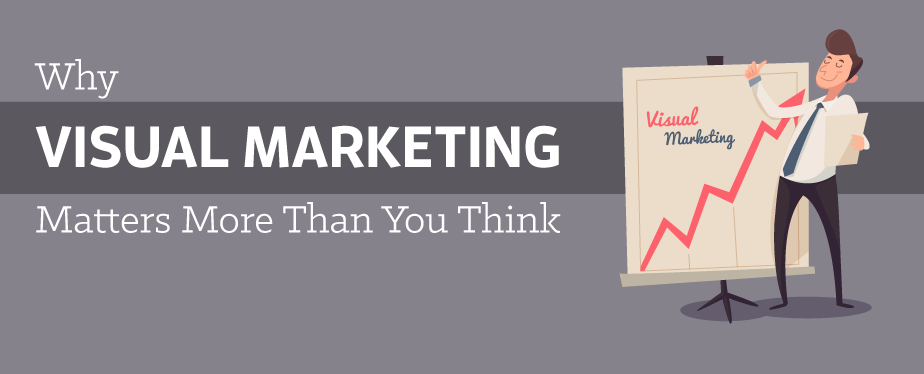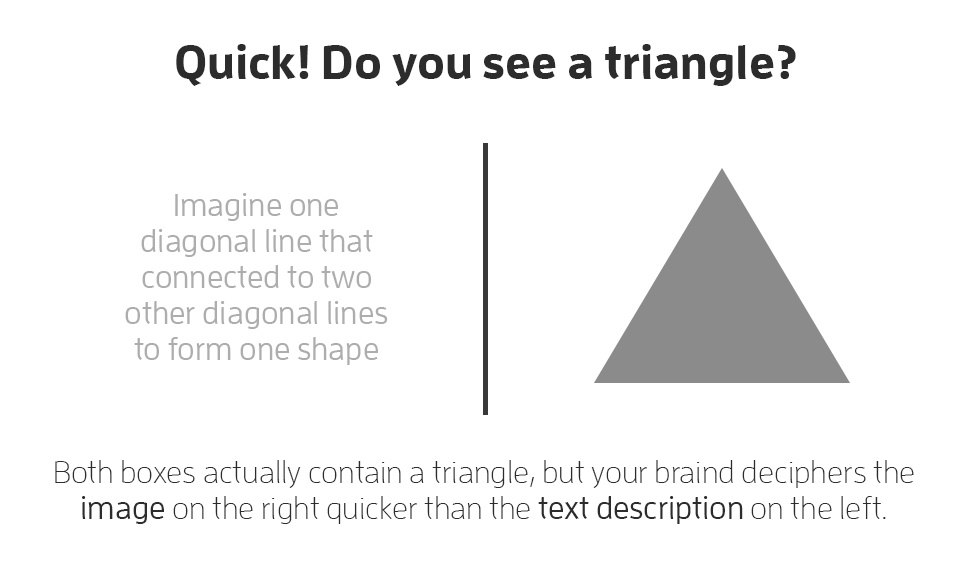
We all know the old adage, “one picture is worth a thousand words.”
For marketers, this is an especially common phrase, right there with “show, don’t tell.”
Since 1921, when Frederick R. Barnard wrote an article about the effectiveness of graphics in advertising for a publication called Printer’s Ink, marketers have used these ideas to create advertising campaigns that focus on images more than text.
And now, in a digital age where engaging visual content can be delivered through more platforms than ever before, this concept is even more relevant.
With an abundance of digital screens both big and small, marketers have almost limitless ways to connect with their customers and clients through images. Here are a few reasons why this availability of visual marketing platforms matters so much.
Visuals Transmit Information Faster
Our brains are wired to interpret the visuals around us at a rapid speed.
The brain can interpret images from the eye in 13 milliseconds (study by MIT), and it can process visual information 60,000 faster than text (3M Corporation).
We are literally built to interpret images over text.

Attention Spans Are Small
In a world, where attention is a limited, in-demand commodity, companies need to use visuals so they can get their message out there while people are still listening.
The average person gets distracted in eight seconds (Inc.com).
With attention spans this small, marketers need a quick way to share information, and the fastest delivery method is visual marketing.
Visuals Help People Remember
Brains transmit information faster and retain it longer.
After three hours, 80% of people were able to remember information presented to them through a lecture accompanied by visuals, compared to only 25% of people who received the information through a lecture only (Active Learning).
Visuals also helped people remember far better than text did. Only 10% of people were able to remember information they read three days later, versus 65% who received information through a visual presentation.

A marketing message is only good if an audience can remember what was said. Visuals help people better recall what was shared with them.
Visuals Help People Learn
Improved recall is an example of how graphics help people learn more efficiently — which has been proven in classrooms.
When visual aids are used in a classroom, learning improved up to 400 percent (3M Corporation, 2001).
Visuals improve comprehension and allow us to learn more information in less amount of time. Stanford University’s Robert E. Horn, explained, “visual language has the potential for increasing ‘human bandwidth’—the capacity to take in, comprehend, and more efficiently synthesize large amounts of new information.”
In a world saturated with content and messaging, using visual marketing is a prime way to cut through the noise.
Visuals Trigger Emotions
As visuals connect quickly with our brains, they often also trigger emotions along the way.
That’s because emotions and visuals are processed in the same part of the brain (SHIFT).
This close connection is why even visuals as basic as color blocks can trigger emotions. The ability for images to elicit emotions allows marketers to create content that can connect more deeply with their audience.
People Prefer Visuals
It’s no surprise that people, with brains wired for images, prefer visual content.
Online content consumption reminds us of this fact.
- Tweets with images receive 150x more Retweets than Tweets without images (Buffer).
- Facebook posts with photos accounted for 87% of all interactions (Modgility).
- 70% of Instagram users log in once a day to view their stream of visual content (PicBackMan).
- Posts that include images produce 650% higher engagement than regular text posts (Adobe).
These numbers reflect why so many experts have been encouraging online marketers to create more and more visually-driven content.
But this applies to offline marketing as well.
Businesses can bring the benefits of visual marketing to their brick-and-mortar locations through the use of graphically-driven digital signs.
When 90% of information that comes to the brain is visual (Hyerle, 2000), using videos, animations, and graphics is by far the most effective way to communicate. In-store screens engage and educate customers far more than static print signs, text information sheets, and even in-person conversations.
In many ways, people are naturally inclined to respond better to visual information. So, are you ready to learn more about how you can reap the benefits of visual content by bringing digital signs into your business?
If so, download our Ultimate Guide To Digital Signage to discover endless visual marketing opportunites made possible by digital signs.